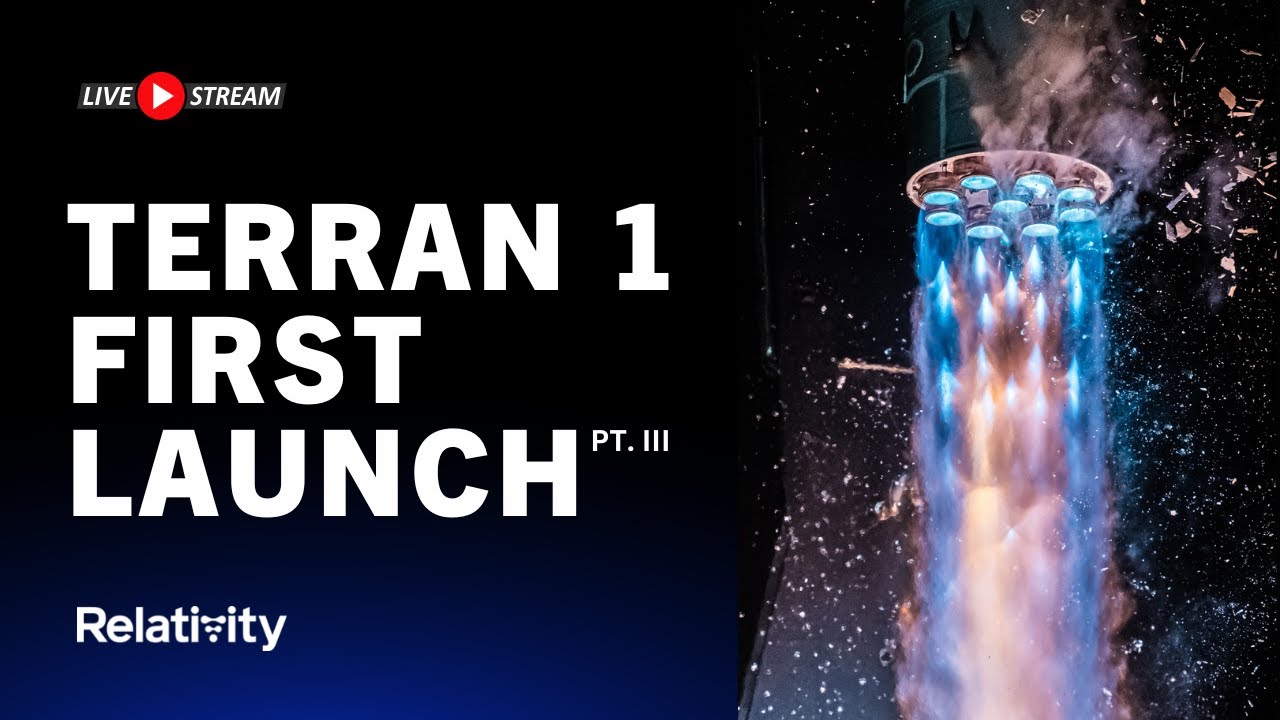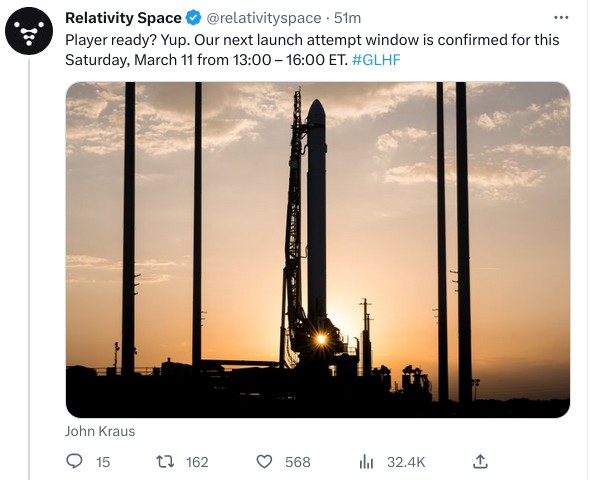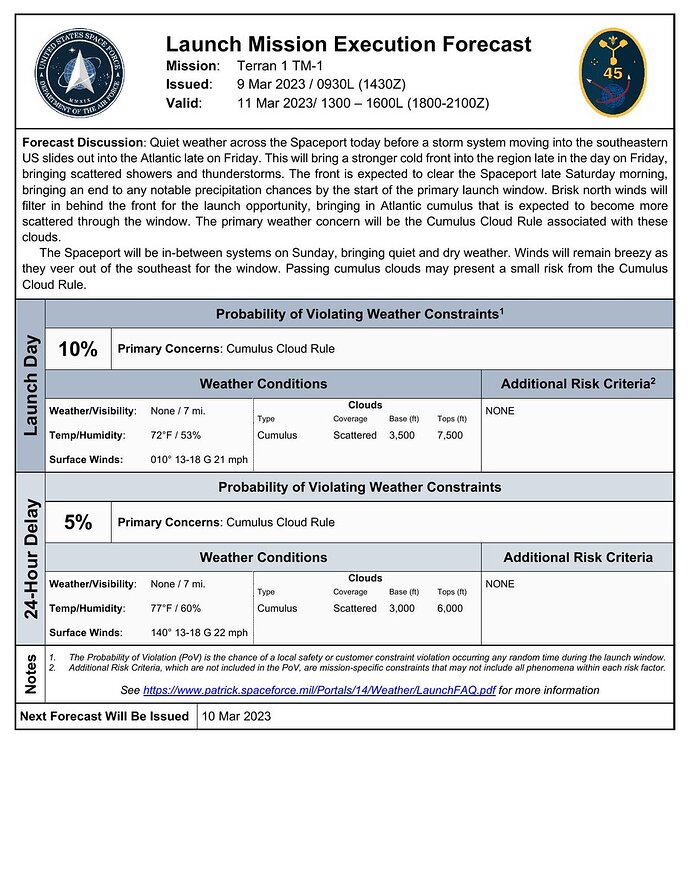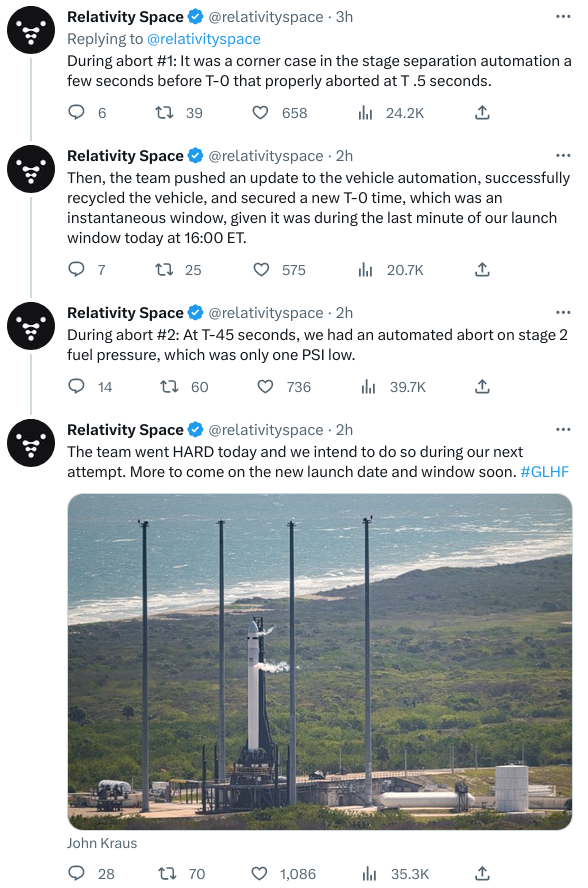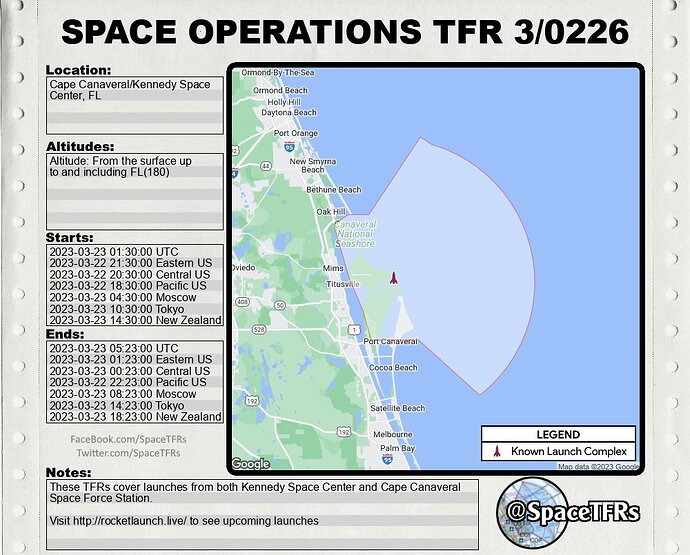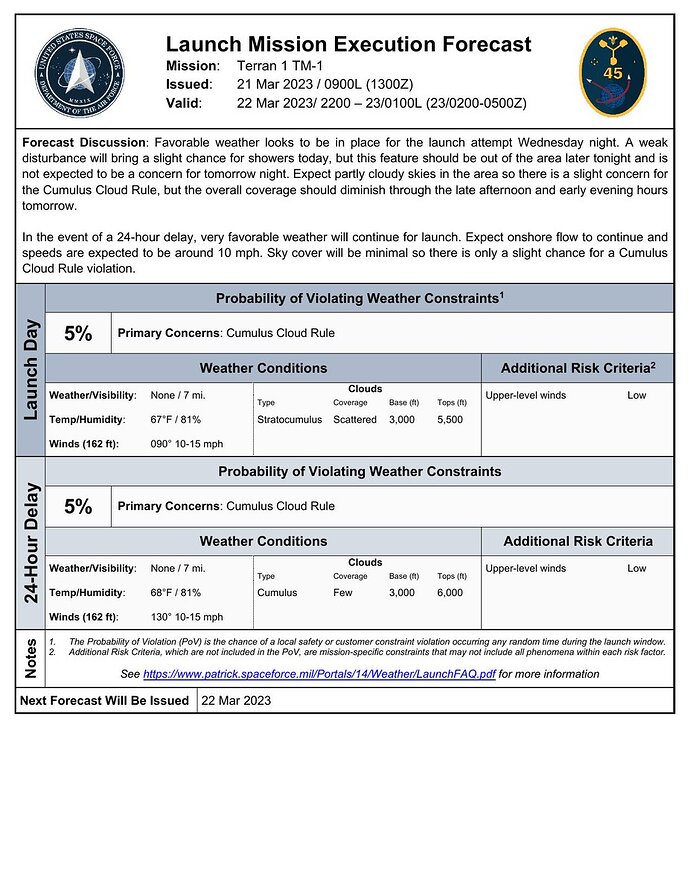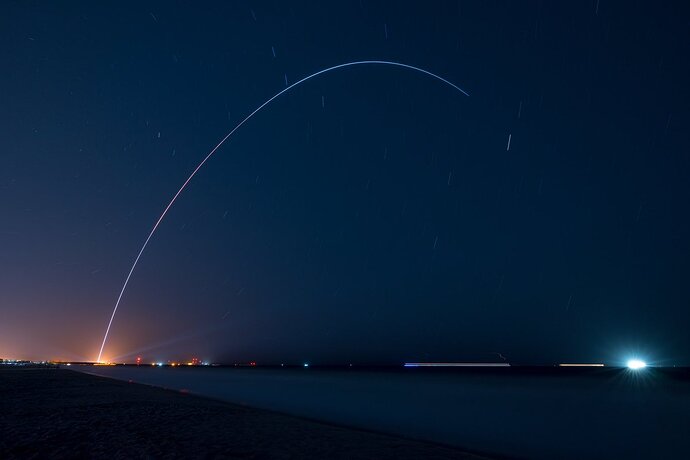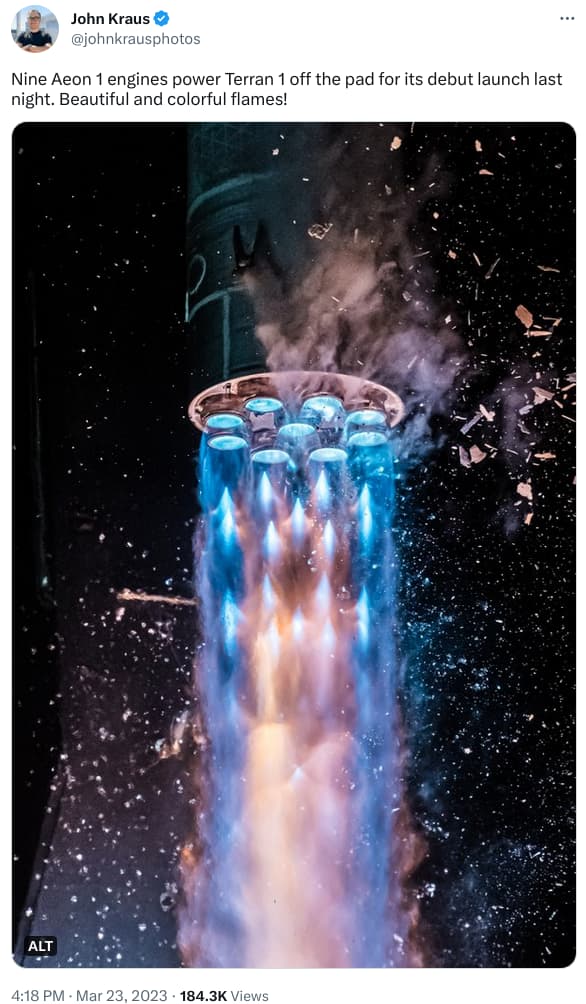After delays due to high winds aloft and a boat straying into the exclusion area offshore (Why don’t these boats ever delay SpaceX launches? Oh, I forgot Elon’s orbiting laser battle stations.), the Relativity Space Terran 1 launched normally. Cue the replay video in the main post to 1:20:58 to pick up the countdown at one minute before liftoff.
The flight proceeded normally through the point of maximum dynamic pressure (max-Q), considered a major milestone for the 3D-printed airframe to survive. At 1:24:46 the video switched to an on-board camera showing the second stage engine after what appeared to be a normal stage separation. There were flashes of flame from the engine but nothing that looked like ignition and a normal exhaust plume. The velocity started falling immediately after this point and continued to fall as the rocket ascended, presumably following a ballistic trajectory imparted to it by the first stage. At 1:26:56 an announcement was made by the launch director that there had been an “anomaly with stage 2”.
Judging from the video, it looks like stage separation was successful, and there was no apparent damage to the second stage engine, but it failed to complete the start process and deliver thrust. “Air start” of a rocket engine in flight is always a challenge. The U.S. Atlas and Soviet R-7 ballistic missiles were both designed to start all their engines on the launch pad and drop expended boosters in flight to avoid having to solve this problem. See the post here on 2023-03-10 “How Do You Start a Rocket Engine?” and cue to the 32:39 point “Starting a Rocket Engine in Space” for a discussion of the additional difficulties this involves. Some of these cannot be simulated on the ground and must be tested in flight, for example, settling the propellants to the bottom of their tanks so they feed into the engine’s pumps (“ullage”). An in-flight start does not have access to the ground support equipment typically used by first stage engines to start, and must rely upon on-board resources that may behave differently in weightlessness and a vacuum.
Whatever happened, the rocket followed a ballistic trajectory and impacted the ocean downrange. Relativity Space thus missed this opportunity to become the first liquid methane/oxygen rocket to reach orbit, but the apparently flawless performance of the first stage engines from launch to cutoff is a vindication of the propellants and the 3D-printing process used to manufacture them.
The colour of the exhaust plume during the night launch was striking. Here is a time exposure of the launch by photographer John Kraus.
Note how the plume starts out almost white, then becomes reddish as the rocket ascends, and finally shades to a pure blue like the flame on a natural gas stove. My guess is that this is due to unburnt methane in the exhaust plume (because the engines, like essentially all rocket engines, run fuel-rich to reduce temperatures in the combustion chamber and nozzle and improve specific impulse [because the fuel has a lower molecular weight than the oxidiser]) interacting with oxygen in the atmosphere. During the first part of the ascent, the hot methane (CH₄) is burning in the ambient oxygen with a bright carbon flame. As the rocket climbs, this combustion becomes increasingly oxygen-starved as the atmosphere thins, leading first to a reddish plume (Why? I haven’t a clue.) and then the pure blue flame of combustion of the on-board liquid oxygen with methane, with the excess methane being invisibly expelled into the near-vacuum. It will be interesting to see if other methane/oxygen rockets such as ULA’s Vulcan and SpaceX’s Starship also make similar “rainbow plumes”.
The flight didn’t go as well as Relativity Space may have hoped, but it certainly checked off a long list of goals which had never been tested in flight. Once they figure out what happened to the second stage, they should be ready to try again.
